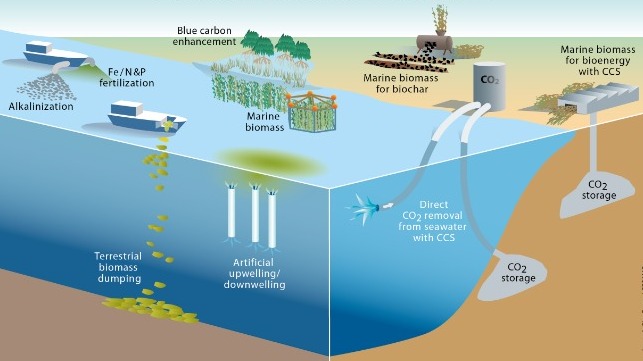EU Funds Research on Ocean-Based Technologies for Absorbing Carbon

[By Maren Agdestein]
This month, scientists from 14 institutions in six countries will begin examining the opportunities and risks of ocean-based technologies for negative emissions. The Norwegian University of Science and Technology (NTNU) is one of 14 institutions involved in the OceanNETs project, newly funded by the EU under the Horizon 2020 programme. The EU grant totaled $8.2 million.
Humanity can still limit global warming to 1.5 degrees Celcius, as shown in the 2018 special report from the Intergovernmental Panel on Climate Change (IPCC). However, the scenarios published in the report also demonstrate that humanity must actively remove greenhouse gases from the atmosphere, in addition to reducing emissions to nearly zero, in order to achieve the goal.
“In addition to the urgently needed emission reductions, technologies including nature-based solutions that remove carbon dioxide from the atmosphere are also necessary,” says Helene Muri, senior researcher at NTNU’s Industrial Ecology Programme (IndEcol) at NTNU. “And the oceans could play a key role in this.”
She will lead NTNU’s participation in the research project.
Ocean-based negative emissions technologies (NETs)
Negative emissions technologies (NETs) have already been investigated for several years with regard to potential, risks and side effects.
“Up to now the focus has mostly been on land-based methods, says Anders Hammer Strømman, an IndEcol professor who is also participating in the project. “We need more knowledge about ocean-based NETs. The ocean has a much higher capacity for carbon absorption and storage, with its enormous surface area and volume.”
“NTNU will lead the work package on model simulations, which will develop state-of-the-art representations of NETs using Earth system models, and assess impacts on not only the oceans, but also land,” Muri said. She said that NTNU will do these simulations using the Norwegian Earth System Model (NorESM).
“The potential of ocean-based NETs to contribute towards the Paris Agreement in a sustainable way is the key research objective for NTNU’s work,” she said.
In Paris in 2015, the international community agreed to limit global warming to two degrees C or less by 2100. In 2018, the Intergovernmental Panel on Climate Change (IPCC) published a special report which shows clear advantages in limiting global warming to only 1.5 degrees C: less loss of biodiversity, fewer extreme weather events, less sea level rise, to name just a few examples. Model calculations used by the IPCC also show that this 1.5 degree goal is still achievable. To reach this target, however, all scenarios require negative emissions.
Project details
The research project is titled Ocean-based Negative Emission Technologies – analyzing the feasibility, risks, and co-benefits of ocean-based negative emission technologies for stabilizing the climate. The project period spans four years. OceanNETs has received funding from the European Union’s Horizon 2020 research and innovation programme under grant agreement No. 869357. The GEOMAR Helmholtz Centre for Ocean Research Kiel is the overall coordinator for the project.
This article appears courtesy of NTNU and may be found in its original form here.
The opinions expressed herein are the author's and not necessarily those of The Maritime Executive.
